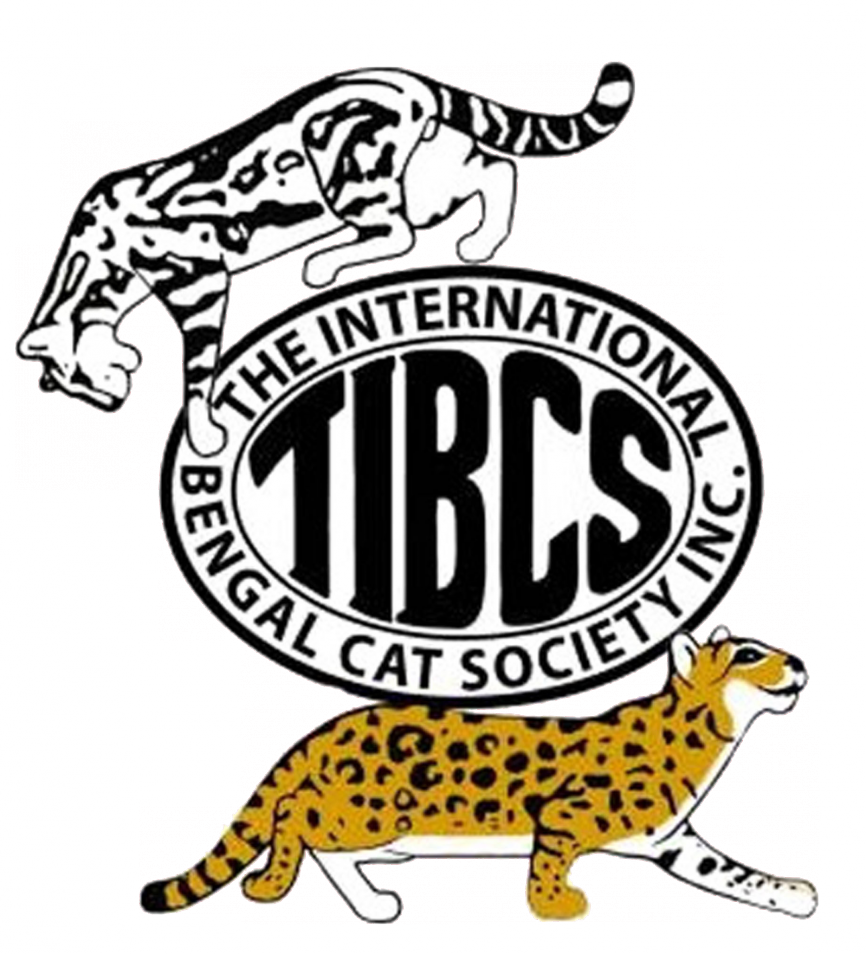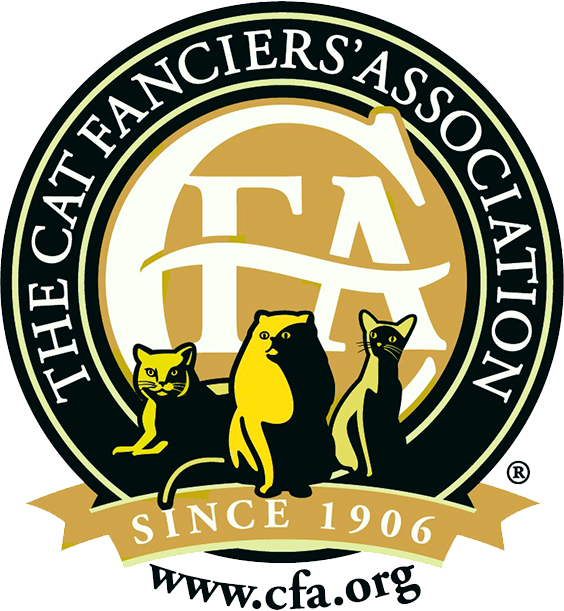Nutritional Recommendations for Bengal cats/kittens.
Proper nutrition is essential for your furry pet to maintain good health and a beautiful appearance. The easiest way to feed you cat is to purchase premium commercial cat food. However, those who are willing to spend more time and effort taking care of their cats may choose a more complicated and expensive, yet more healthy, way to feed their animals by creating a menu based on natural products. A cat is a predator; therefore, its nutrition should consist mainly of meat.
However, the opinions of feline owners differ on which meat to use and how it should be prepared. Some give their cats raw meat, some boil it and some cook it in a microwave. So, which is best?
 It is very important to be aware that Bengal cats inherited a very short intestine, and with it, a very sensitive digestive system. It is easy to wreak havoc on it and lead to the infamous Bengal diarrhea. Therefore, the better nutrition your kitten receives, the healthier it will be. We suggest you follow the recommendations below.
It is very important to be aware that Bengal cats inherited a very short intestine, and with it, a very sensitive digestive system. It is easy to wreak havoc on it and lead to the infamous Bengal diarrhea. Therefore, the better nutrition your kitten receives, the healthier it will be. We suggest you follow the recommendations below.
These nutritional recommendations only cover the period of your kitten’s adaptation to its new home. Transition to new dry foods as well as introduction of new dietary items should be done gradually and very carefully.
Approximate adaptation time is one month. Further development and health of your kitten depends on its nutrition. Your pet’s nutrition should be well-balanced – it should have all the necessary vitamins and microelements in correct proportions.
After the period of adaptation to its new family and the establishment of the nutritional regimen for your kitten, you must then watch its weight. Often, Bengals are prone to weight gain; in this case, switch to lower-calorie food and/or cut down portion size.
You can feed Bengal cat/kitten
- Commercial dry food
- Natural food
- Combination of both

There is no unified opinion which of these types of food is the best; you must make this choice yourself.
Dry commercial food
Commercially prepared food is more convenient because it saves preparation time, is balanced and has all the necessary nutrients. You can use both dry and canned food. Dry foods must be of premium quality. Ideally, they should be made of all-natural ingredients. Use premium products from well-known brands. Do not use cheap stuff! Poor-quality foods use bones, hides and feathers for protein, instead of meat. Their use will not satisfy your cat’s nutritional requirements and might cause illness. They also contain too many minerals which increases the risk of kidney stones.
We feed our Bengal kittens and adult cats with: Royal Bengal Adult Dry Cat Food, Purina One True Instinct Natural Grain-Free Formula Adult Dry Cat Food, Royal Canin Kitten Dry Cat Food, and Purina One Grain-Free classic Pate Recipe Wet Cat Food.
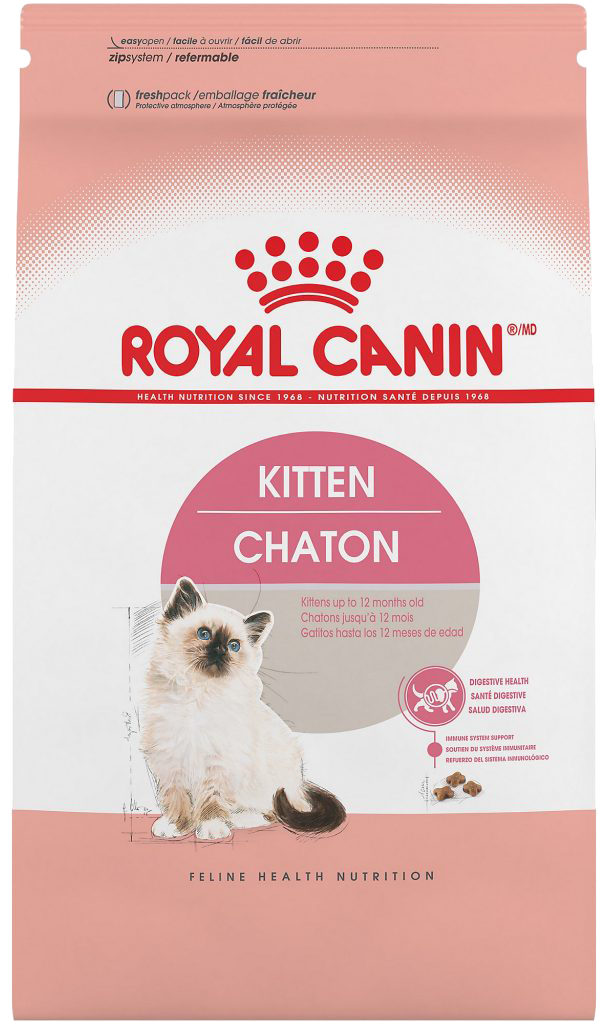
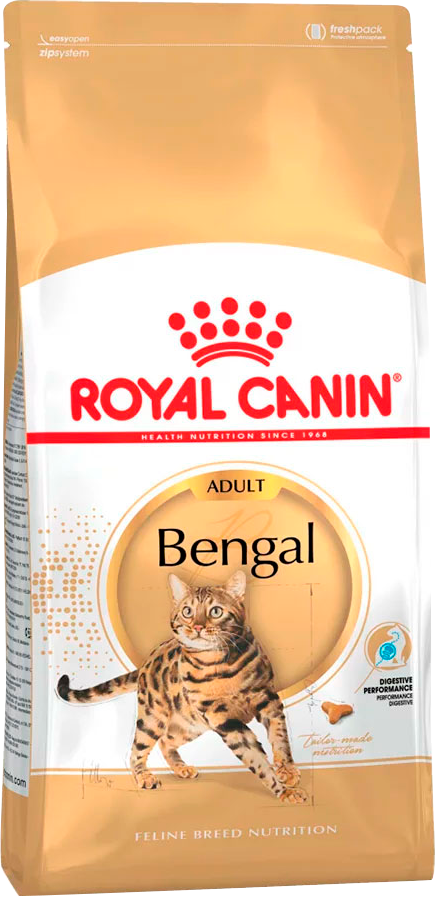
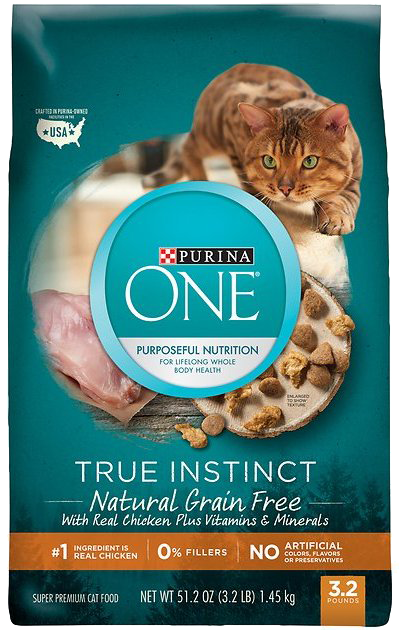
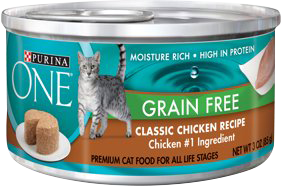
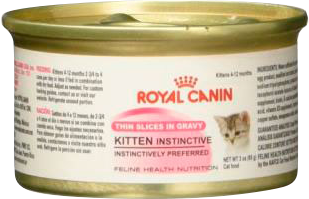
Veterinarians recommend that dry food contain no less than 26% protein and 9% fat. This type of diet should be established during the first year of life due to the sensitivity of Bengals’ intestines.
Adult Bengals may become ill if switched from natural food to commercial food.
Important: If your pet eats dry food, it requires plenty of water. Bengal cats prefer running water – make your pet a home-made fountain.
NATURAL FEED
Bengals are natural predators, which is why 70% of their diet should consist of lean raw meat. In order to avoid parasitic infections, meat should be pre-frozen solid.
Food should be given at room temperature or slightly warm. You cannot give your pet food that is too hot or too cold (from refrigerator).
Remember: cat is a predator, so no pizza, smoked chicken, pasta, or chopped cabbage. Do not try to introduce your cat to your own diet – this can cause various illnesses.
|
1. |
Fish or chicken bones |
These are a choking hazard and can also cause damage to esophagus and stomach, as well as intestinal blockage. |
|
2. |
Pork, lamb, poultry: goose, duck, (except chicken) |
These meats have high fat content and are poorly digested. In raw form they can cause worm infestation, or sometimes dangerous infectious diseases and even death. |
|
3. |
Fatty, spicy, pickled, smoked foods, such as sausages or canned goods; fried foods |
These foods cause indigestion and poor metabolism. Animal can become chronically ill and have poor appearance. |
|
4. |
Sugar, chocolate, cakes, candy and other sweets |
These products disrupt metabolism, weaken immune system, cause dullness of fur and tooth decay. CHOCOLATE contains theobromine, which is POISON. Can cause death. |
|
5. |
Potatoes |
Starches are not digested. Potatoes have no nutritional value and can cause indigestion. |
|
6. |
Beans (soy, peas, kidney beans) |
Beans are not digested, cause intestinal fermentation and bloating. |
|
7. |
Salt and spices |
Are not used; they are of no benefit and may be harmful. |
|
8. |
Medications formulated for humans, including vitamins |
Cats have their distinct metabolism, and “human” vitamins do not work for them. Also, many medications formulated for people can be poisonous, affecting feline kidneys; can cause death. |
FREQUENTLY ASKED QUESTIONS
- Is it okay to feed cats porridge?
No. Porridge should not be given in any amount. A cat is an obligatory predator with metabolism based on fats and proteins. Its body does not have carbohydrate-breaking enzymes. In the best-case scenario, the porridge will pass right through, interfering with the absorption of other nutrients. At worst, it will cause diarrhea. As far as the popular question, “Isn’t there grain in mice stomachs?”, first, very few mice feed exclusively on grain, and second, grain in a mouse’s stomach is already fermented and makes up only a tiny fraction of mouse’s volume.
- To boil or not to boil?
No to boiling. A cat should be fed only raw products. Even short boiling can decrease the amount of nutrients in meat and make proteins harder to digest. Boiled or fried bones cannot be metabolized and are likely to cause intestinal obstruction.
Should meat be given with bones or without?
Bones are essential in cat diet. It is a source of calcium. Also, gnawing on bones cleans teeth and exercises jaws. Cats would do well with neck, spine and head of small fowl, such as duck or chicken. A small bird like quail can be given whole. Turkey neck bones would be too hard for your cat to handle. Tubular bones, as well as any cooked bones are not allowed.
- Are bird heads and necks really needed?
Yes, with bones and all. Necks are the main source of calcium and collagen, and brains and eyes have nutritional value. Brains contain B vitamins, amino-acids, phosphorus and other valuable elements. Eyes are so-called liquid cartilage which is a good source of collagen. Seemingly sharp head bones cannot injure a cat; the same is true about neck bones. Mother Nature designed cats to eat their prey whole. You can offer necks and heads whole or cut them into smaller pieces.
- Ground meat or chunks?
Chunks only. The gastro-intestinal tract as well as the jaw apparatus of a cat are made to tear off chunks of meat and swallow them whole after minimal chewing. The internal environment of feline stomach and intestine aggressively digests meats in this form only. Ground meat cardinally changes the digestion process, causing meat to accelerate through GI tract, which interferes with absorption of nutrients. For mixed diets, meat should be added in 2x2 cm chunks. Chicken necks can be given whole, if your cat doesn’t mind.
- Which diet type is better -- mix or mono?
Mono feeding is the type of natural feeding regimen in which a cat receives all the necessary nutrition not as a single meal, but as alternating feedings with different types of meat products. As a rule, continuous feeding with one type of meat is not considered a complete diet. Mix is a type of feeding when all the dietary meat products are cut up and offered mixed together. Both types are legitimate, both are correct, and pet owners are free to choose what works best for them and their animals. One advantage of mono feeding is the joy of watching your predator tear into a single piece of meat, ripping off chunks and swallowing them, just as it would do in its natural habitat. The advantage of mix is that it ensures that the content of every meal your cat receives maximally approaches all the elements found in natural prey.
- Which meat is best for your cat?
In order to understand a cat’s diet, you need to consider its natural prey. Mainly, it consists of small rodents and birds; sometimes, lizards, frogs. Therefore, the mainstream of its diet should be meat with bones. However, it is not just flesh, but also offal – hearts, lungs, livers, gizzards, kidneys, etc. Cats can eat practically any meat – beef, chicken, turkey, rabbit – as long as it is red and not fatty. For instance, chicken breasts have very little nutritional value.
- Which vegetables are allowed and why?
In cat’s diet, vegetables serve one function – they are the source of rough fiber that helps intestinal peristalsis and are added in small amounts for that reason only. They are also added to the diet of animals prone to obesity. The most suitable vegetables are squash, pumpkin and carrots. Most cats do not mind these additions to their meals (one must note, that each cat’s preferences may vary). There are cats who would eat other vegetables – cauliflower, broccoli, cucumbers, etc. One must keep in mind that cabbage and beans can cause intestinal gas, and therefore, are not recommended. The same precautions should be applied to beets. Vegetables containing starch, such as potatoes, are completely contraindicated. Radishes and hot peppers are not suitable either. Onions and garlic are harmful, they can cause anemia. Vegetables can be added to meals in raw diced form, or slightly heated in vegetable (preferably olive) oil.
- How much food should be given per day?
Recommended daily allowance is 3-5% of adult animal’s body mass; for growing kittens it is up to 10%. It is worth considering that the less fur a cat has, the more food should be given relatively to its body mass. Daily allowances depend on the breed, age, activity level and hormonal status of an animal, which is why each animal needs an individual approach. In any case, a cat usually would not eat more than it needs.
- How often should food be given?
In a diet consisting of all-natural products of animal origin, twice a day should be enough. Daily allowance is divided equally and given mornings and evenings.
- Which nutritional supplements are good for cats?
Dairy products, hard cheeses, cottage cheese, bran, quail eggs.
Cottage and hard cheeses are sources of calcium; hard cheese also contains many vitamins and useful bacteria. Cheese can be given up to 15 grams per day.
Dairy products contain B vitamins, as well as bacteria helpful to digestion.
Bran enhances peristalsis and colon cleansing.
Quail eggs are rich in vitamins A and B, potassium, calcium, magnesium and amino-acids. They can be given in the shell, once every one or two days. Quail eggs are especially recommended for lactating cats.
Note: these products are merely supplements and not main dietary ingredients.
- What types of offal are good for cats?
Heart is a good source of protein and taurine. Porcine and turkey hearts are the best. Bovine heart is harder to digest, and chicken heart is higher in fat. Hearts can make up 40% of feline diet.
Liver is rich in amino-acids and vitamin A but can cause loose stools. In order to avoid excessive consumption of vitamin A and/or diarrhea, liver cannot exceed 5% of the diet. It is best to mix it with other types of meat.
Poultry stomachs are sources of protein, vitamins and beneficial microflora. Percentage of gizzards in diet can also be up to 40%. Bovine or ovine rumen is good for digestion, as it contains healthy bacteria; however, it is high in calories and fat, and should be used in small amounts.
Poultry heads and vertebra (necks and backs) are the main source of calcium. They contain other microelements beneficial for cats. Also, they are natural teeth cleaners and jaw strengtheners.
Chicken cartilages and rooster combs are the source of collagen. They have little nutritional value but provide building materials for bones, cartilage and tendons.
Lungs have almost no nutritional value but are viewed as a supplier of cartilaginous tissue. They are useful during active growth period, but only as a small menu supplement due to high phosphorus content.
Kidneys are a source of protein. Not all cats are willing to eat kidneys due to their specific odor. However, kidneys are filtration organs, and therefore, like livers, are not suitable for mono diet.
Spleen has very little nutritional value. It is rich in phosphorus and poor in calcium. Like liver, it can cause loose stools. Of course, a cat won’t get sick after eating a piece of spleen but won’t get much benefit either.
- Are pork and lamb allowed?
Of all meats, pork and lamb are completely forbidden to cats. Both can cause fatty deposits inside internal organs. Pork is high in fat and it can strain liver and pancreatic functions.
- How can parasites be avoided?
It would be wrong to think that avoiding raw meat can help a cat escape parasitic infection. It is just as probable that parasites can be picked up from its own coat or your floors, which, in turn, may be contaminated by your own clothing and shoes. Your cat should be fed high quality fresh meat purchased well before expiration date. To minimize the chances of infection all food should be frozen for several days. Also, do not forget about regular de-worming of animals, as well as the necessity of good personal hygiene.
- Is freezing necessary?
Yes. This minimizes the probability of infection. If the purchased product has already been frozen, no additional freezing is necessary.
- How often should de-worming occur with a natural diet?
Raw meat and offal should not be considered a source of parasites. Methods of feline infections vary and depend on many factors, such as opportunity to roam freely, hunting mice or birds, geographic region, etc. That is why regular de-worming is necessary with any type of diet. Parasitologists recommend treatments once every three to six months. However, in every case, frequency of treatments, medication and dosage should be determined by a veterinarian.
- Are houseplants dangerous?
Some houseplants are dangerous to cats, but only when ingested. Therefore, before bringing your cat/kitten home make sure your houseplants are safe.
- Is fish allowed and which fish?
Fish, especially fatty types, is a source of beneficial omega-acids, complete proteins, minerals, and vitamins. Most prevalent vitamins are A, D, B1, and B2. The most abundant mineral is phosphorus. This is a consideration – too much phosphorus in the diet can be harmful. Besides, fish is fattier than meat; it can be fed to your pet but cannot be the only food source. Some say that consumption of raw fish leads to parasitic infections. This is not true. First, farm-raised fish is treated for parasites. Second, one needs to consider which fish are less susceptible to helminthiasis. The least susceptible are tuna, mackerel, and members of the sturgeon family. Slightly more susceptible are salmon, trout, and pollock. Also, low temperatures will destroy parasites; the lower the temperatures, the faster the destruction. For instance, at -25°C, parasites die after 72 hours; at -18°C, in one week. Fish can also be boiled for a short time, except all the bones need to be removed immediately afterwards. The content of omega-acids will not change after boiling. Some fish contains thiaminase. This is the enzyme that destroys B1 vitamin both in the feed and the cat’s intestine. Cod family fish can cause iron deficiency anemia. All the above means that fish should not be the main food source for your cat, but only a small but useful addition.
- Day-old chicks: What are they and how should they be fed to cats?
Day-old chicks are the discards of egg-producing poultry farms. At the age of one day, male chicks are destroyed. They are usually sold unplucked and frozen. Each chicken contains heart, liver, and yolk. Instead of bones, they have soft cartilage and contain large amounts of phosphorus, as well as calcium, iron, sodium, magnesium, chlorine and sulfur. Yolk is rich in lipids, vitamins, and contains lecithin. Yolk can be viewed as a source of vitamin D, which, together with phosphorus, aids absorption of calcium by the body. Despite the seemingly rich nutritional content, day-old chicks cannot be the main source of the diet, since they will not provide your cat the full balance of proteins, fats, vitamins and minerals. They are nothing more than a beneficial supplement. Important note: only use reputed suppliers you trust. Use of day-old chicks is not necessary; however, if you cat enjoys them and is in good health, you can include chicks in its diet from one carcass a week up to one a day.
- Are vitamin supplements necessary?
A well-balanced diet that consist of several types of meat with bones will provide your cat with all the necessary nutrients. Vitamin supplements are needed only if some necessary ingredients are missing.
- What to do if my cat does not eat well?
Loss of appetite suggests health problems and you should address this with your vet. A healthy cat always has good appetite and eats as much as it needs. If a cat refuses to eat just one type of food, this food can be substituted by another product of similar nutritional value or mixed in small amounts into another type of meat.
- What happens if a cat consumes a non-meat product (treat)?
Some cats would like foods that are not good for them. For instance, potatoes. If an animal consumes a small piece of wrong food, most likely there will be no harm and you can treat your cat occasionally with such foods. However, large amounts of wrong food can cause serious health problems, and even be lethal. In that case, you need to take it to a vet as soon as possible. Some foods are dangerous and strictly forbidden, e.g., chocolate.
- Why does a cat on a natural diet drink very little?
The water content in natural diet is about 80%. This amount is quite enough for normal body functions. Besides, high water-content diet is good for prevention of genitourinary diseases. A cat should have free access to fresh water, but water consumption would be quite small. This is normal.
- Why does a naturally fed cat rarely go to the bathroom?
Rare defecation is normal in naturally fed cats. The stools should be well-formed, without strong rotting smell. This speaks of high levels of food absorption. Stools that are too hard or too light mean there are too many bones in the diet. Prolonged cleanliness of the litterbox means your cat is constipated. You can help by adding more vegetables and fresh yogurt to the feed. Naturally fed cats usually poop once a day; sometimes even less frequently – once every two or three days.
- Where can I find natural feed recipes?
The composition of feed may vary depending on your cat’s breed, age, health conditions, availability of different foods in your area and many other aspects. Our goal is to give cat owners general recommendations, as well as necessary knowledge and tools to formulate a well-balanced nutritional regimen for their animals.
- How to naturally feed a chronically ill animal?
All the recommendations given here are for the healthy animals only. However, it is possible to feed a chronically ill cat using natural diet. Any diet can be adjusted with consideration of several factors: type of the chronic condition, its severity, medical test results, etc. Every case needs individual approach under the veterinary supervision and taking into the account blood and urinary tests results.
Bones in cat’s diet.
This is one of the most frequently asked questions: to feed your cat bones or not to feed.
Here, I will try to emphasize the points that are important to me.
1. Introduction of bones into feline diet is often explained by the fact that bones are the source of calcium. Indeed, most of the body calcium by mass (about 99%) is in bones. The most of bone organic material is a fibrillary protein collagen. It binds together the inorganic components of bone tissue. Bones have other proteins besides collagen, as well as carbohydrates and fats. Inorganic components are mainly hydroxyapatite Ca10(PO4)6(OH)2 and amorphous calcium phosphate Ca3(PO4)
The proportions of these components depend on age: amorphous phosphate is predominant during the early years, but with age, the relative amount of hydroxyapatite increases.
In chicks, the percentage of calcium (and phosphate) in bones increases drastically during the first month; for broilers it happens in 10-15 days.
Bone digestion is possible due to high concentration of hydrochloric acid in feline stomach. Gastric juice is clear, colorless liquid; it is acidic due to the presence of HCl.
Hydrochloric acid concentration in meat-eaters stomachs is much higher (0.5-0.6%) than that in herbivores (0.1-0.3%).
For predators, high acidity is essential for bone digestion as well as elimination of dangerous bacteria that can enter their organisms with feed. House cats can be fed whole small fish, day-old chicks, chicken heads and necks. However, all these should be served raw and bones should be served with flesh – this way the animal swallows the bones and flesh together in chunks.
3. Cooking will alter the chemical composition of bones. Fats and proteins will end up in broth, proteins undergo denaturation (including denaturation of collagen) and vitamins are destroyed. But most important, calcium phosphate becomes more acid resistant and demineralization of bone in the stomach does not happen.
Feeding cooked bones to cats is strictly prohibited! Cooked bones are one of the reasons for mechanical intestinal blockage. Also, you should not feed animals tubular bones from poultry, because they break easily, and sharp fragments can injure GI tract.
Parasites and how to fight them.
Why are many owners afraid to feed their pets a natural diet? Because of the common perception that raw meat causes helminthiasis. Often, people are afraid to get sick themselves. At the same time, for cats, raw feed is best because that is what cats eat in nature. So, what should you do? How can you shed fears and feed your pets correctly?
There is an article based on the answers given during various forums by parasitologist Sergey Konyaev.
When we say “meat”, we usually mean the product of slaughterhouses. This is not just flesh, but also the offal. If you feed animals raw meat, most likely you would give them other meat products too. Meat can contain the larvae of Toxocara and, less commonly, of cestodes. Trichinosis doesn’t usually affect cats; sheep and cattle do not carry these roundworms and pork is usually tested for it. But because you can never be a hundred percent sure, animals should be treated with praziquantel regularly.
If your cat hunts rodents, lizards, frogs and birds, regular de-worming is a must. If you apply Advantage or Revolution neck drops for flea prevention, these can be effective against roundworms as well.
Most owners think that pills are better than neck drops, since pills works inside the intestine, where helminths are. However, drops like “Revolution” are absorbed through skin into the bloodstream and kill Toxocara larvae. Then, the substance is excreted in bile, enters intestine and kills adult helminths. Dead worms will exit with feces. No need to get new pill after the first twenty-four hours.
Some parasitic infections affect both humans and domestic animals. But most of them cannot be transmitted from animals to humans. For instance, toxocariasis. In humans, toxocara causes a larva migrans syndrome, but adult forms in the intestines do not develop. Toxoplasmosis does not bother most people, though it can be dangerous for pregnant women and those with suppressed immune system. Lambliosis infects practically every second human, but hardly ever decreases quality of life. Cats and dogs have their own lamblia; only one type is common with humans, but it is uncommon. A big question is: who transmits what to who. Echinococcosis can be transmitted to humans from dogs, alveococcosis – from cats, but rarely. Taeniasis (bovine or swine tapeworm) happens from eating meat; cats and dogs have nothing to do with that. Cysticercosis can be passed from one person to another or even to oneself. The best prevention is thorough hand washing before handling food. The same applies to ascariasis, which is impossible to get from cats or dogs – animals have their own species. Pinworms usually affect children. They are not harmful and have nothing to do with cats or dogs. Strongyloidiasis, trichuriasis, ankylostomiasis are caused by human-specific species. They can be relatively easy to diagnose and rarely cause serious pathology; these days they are not common. Opisthochiasis, clonorchiasis, difilobotriasis, gnathostomiasis, anisakiasis and nanophyetus infection can be caused by eating raw fish or by human-to-human contact, but not by being around animals.
There is no reason for preventive de-worming of children who are in constant contact with cats and dogs. Without proper diagnosis it can be simply harmful. Learning proper hygiene, following proper food-handling techniques and regular testing are the best method of parasite prevention. Not pills. This is the difference between humans and pets.
Another common scare is chicken coccidiosis, but cats are not affected. Cats can get feline isosporiasis, but infection usually occurs from animal-to-animal contact or from eating mice or other rodents. Note: protozoan oocysts are quickly destroyed by temperatures below -10o C. Cats are more resistant to salmonella than other animals, and, if they get salmonellosis, it usually happens at young age.
Because of these issues, you should only purchase meat and offal for your pet from the sources with established health inspections. In slaughterhouses and poultry farms, such control is mandatory. Bear in mind that the risk of parasite transmission is always present, but raw meat is not necessarily the culprit. For example, ova can be brought into you house on the bottoms of your shoes. To minimize risks, meat for your cat’s consumption should always be pre-frozen. Also, do not forget about preventive de-worming as well as proper personal hygiene.





